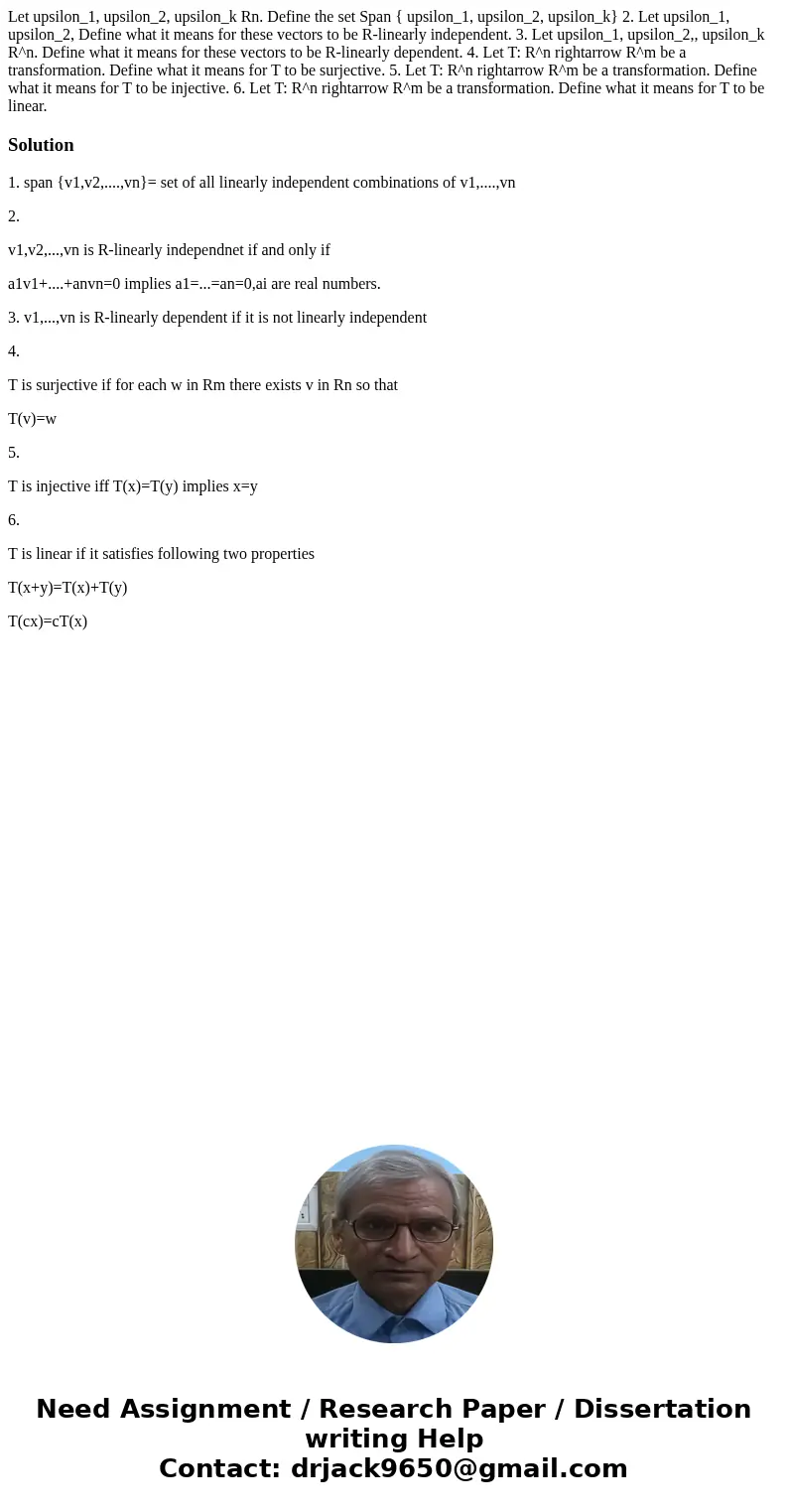Let upsilon1 upsilon2 upsilonk Rn Define the set Span upsil
Let upsilon_1, upsilon_2, upsilon_k Rn. Define the set Span { upsilon_1, upsilon_2, upsilon_k} 2. Let upsilon_1, upsilon_2, Define what it means for these vectors to be R-linearly independent. 3. Let upsilon_1, upsilon_2,, upsilon_k R^n. Define what it means for these vectors to be R-linearly dependent. 4. Let T: R^n rightarrow R^m be a transformation. Define what it means for T to be surjective. 5. Let T: R^n rightarrow R^m be a transformation. Define what it means for T to be injective. 6. Let T: R^n rightarrow R^m be a transformation. Define what it means for T to be linear.
Solution
1. span {v1,v2,....,vn}= set of all linearly independent combinations of v1,....,vn
2.
v1,v2,...,vn is R-linearly independnet if and only if
a1v1+....+anvn=0 implies a1=...=an=0,ai are real numbers.
3. v1,...,vn is R-linearly dependent if it is not linearly independent
4.
T is surjective if for each w in Rm there exists v in Rn so that
T(v)=w
5.
T is injective iff T(x)=T(y) implies x=y
6.
T is linear if it satisfies following two properties
T(x+y)=T(x)+T(y)
T(cx)=cT(x)

 Homework Sourse
Homework Sourse